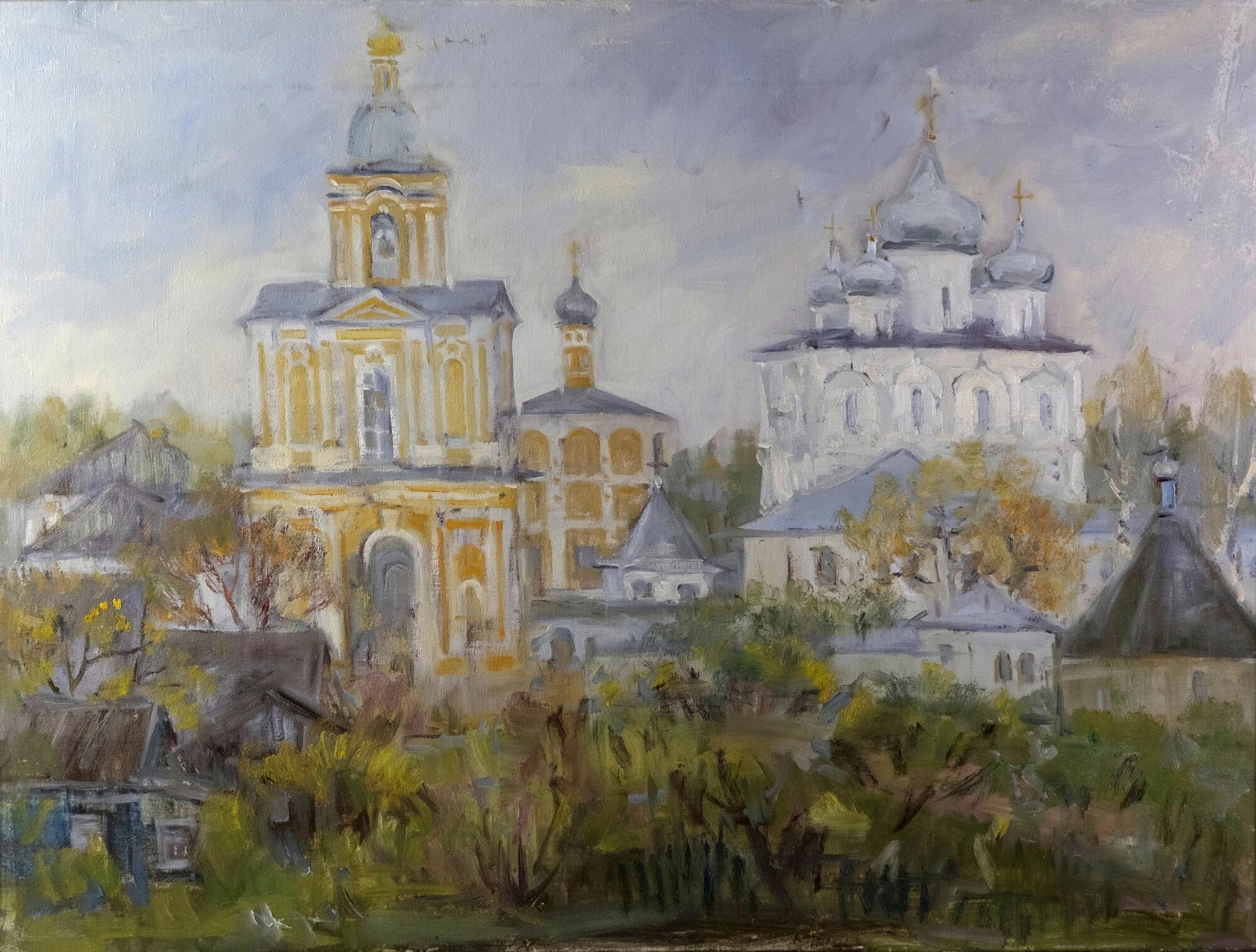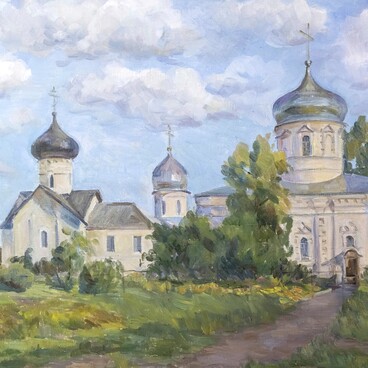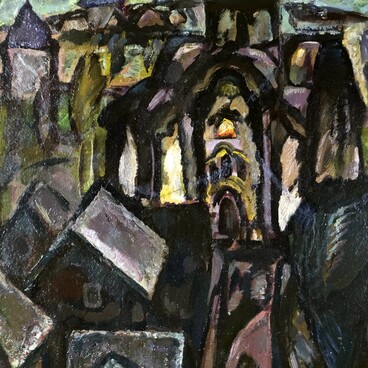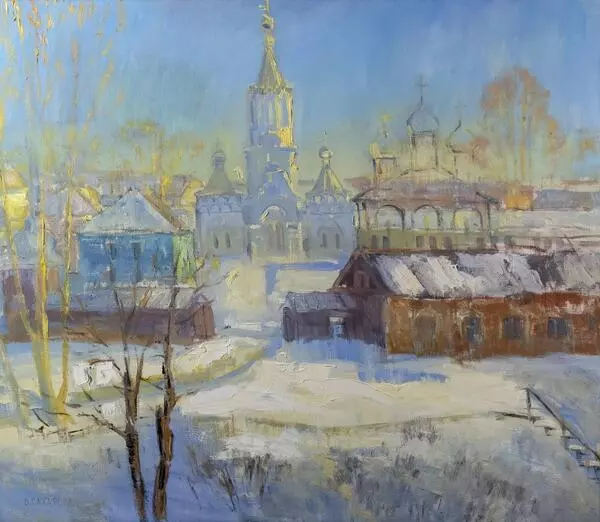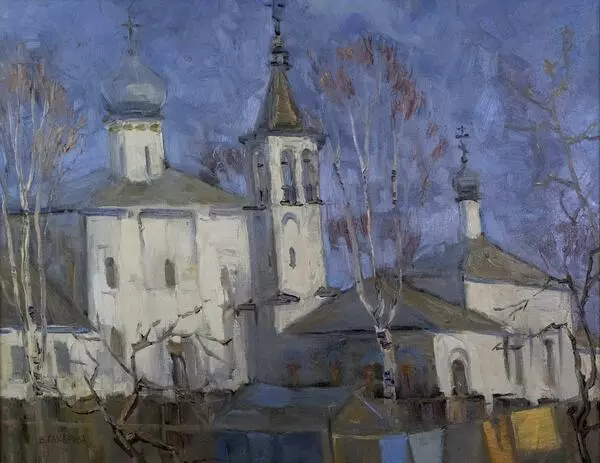The words “the triumph of truth” accurately characterize the history of the Khutyn Holy Transfiguration Monastery, which has stood for centuries despite all difficulties.
The monastery is located north of Novgorod, at the confluence of the Rivers Volkhov and Maly Volkhovets.
The triumph of truth began with the founder of the monastery. A descendant of a noble boyar family, Alexy Mikhailovich from his youth despised earthly glory and prosperity; he took monastic vows and the name Varlaam, and retreated as a hermit to Khutyn (formerly —Khutino). There are two etymological interpretations of the toponym. The first one, which appears in Varlaam’s hagiography, refers to the word “khudoy” (“bad”), “khudoye mesto” (“damned place”): according to legend, there were evil spirits in Khutyn, which the saint expelled. Another version considers the word “khot” (“desire”): it was a place that first the Monk Varlaam himself desired, and then other people who came there.
St. Varlaam of Khutyn handed over to the monastery his ancestral lands: floodplains, areas for fishing and trapping goldeneye, the village of Sluditsy with a church of St. George, and an island on the Maly Volkhovets for seine fishing. Thus, he laid the foundations of land ownership and strengthened the economic position of the monastery. Under him, the monastery’s charter was established.
The Khutyn Monastery played an important role not only in the religious sphere, but also in the political and cultural life of Novgorod. For instance, in the 13th century, it was involved in the confrontation between the Vladimir-Suzdalian and Chernigov princes; in the 13th–15th centuries, a rich library was amassed there, and a unique architectural ensemble was formed. In addition to the first Transfiguration Church constructed in stone, three more stone churches were built as well: the gate churches of Anthony the Great (1417) and Elijah the Prophet (1418) and the Church of St. Varlaam of Khutyn with a bell tower (1445).
In the 16th century, the monastery enjoyed the patronage of tsars and grand dukes, especially Vasily III, and reached its heyday. In 1611, the Swedish invaders did not destroy the monastery, but instead set up their headquarters in it.
Under Peter I and his heirs, who did not favor monasticism, the monastery’s income and the number of inhabitants significantly decreased. But the monastery survived thanks to the love and reverence of the townspeople. The reform of Catherine II that nationalized all church lands did not affect the monastery, on the contrary, it was given the first-class status, which qualified it for state support.
By the 19th century, the Khutyn Monastery was one of the most prosperous in the country.
The monastery is located north of Novgorod, at the confluence of the Rivers Volkhov and Maly Volkhovets.
The triumph of truth began with the founder of the monastery. A descendant of a noble boyar family, Alexy Mikhailovich from his youth despised earthly glory and prosperity; he took monastic vows and the name Varlaam, and retreated as a hermit to Khutyn (formerly —Khutino). There are two etymological interpretations of the toponym. The first one, which appears in Varlaam’s hagiography, refers to the word “khudoy” (“bad”), “khudoye mesto” (“damned place”): according to legend, there were evil spirits in Khutyn, which the saint expelled. Another version considers the word “khot” (“desire”): it was a place that first the Monk Varlaam himself desired, and then other people who came there.
St. Varlaam of Khutyn handed over to the monastery his ancestral lands: floodplains, areas for fishing and trapping goldeneye, the village of Sluditsy with a church of St. George, and an island on the Maly Volkhovets for seine fishing. Thus, he laid the foundations of land ownership and strengthened the economic position of the monastery. Under him, the monastery’s charter was established.
The Khutyn Monastery played an important role not only in the religious sphere, but also in the political and cultural life of Novgorod. For instance, in the 13th century, it was involved in the confrontation between the Vladimir-Suzdalian and Chernigov princes; in the 13th–15th centuries, a rich library was amassed there, and a unique architectural ensemble was formed. In addition to the first Transfiguration Church constructed in stone, three more stone churches were built as well: the gate churches of Anthony the Great (1417) and Elijah the Prophet (1418) and the Church of St. Varlaam of Khutyn with a bell tower (1445).
In the 16th century, the monastery enjoyed the patronage of tsars and grand dukes, especially Vasily III, and reached its heyday. In 1611, the Swedish invaders did not destroy the monastery, but instead set up their headquarters in it.
Under Peter I and his heirs, who did not favor monasticism, the monastery’s income and the number of inhabitants significantly decreased. But the monastery survived thanks to the love and reverence of the townspeople. The reform of Catherine II that nationalized all church lands did not affect the monastery, on the contrary, it was given the first-class status, which qualified it for state support.
By the 19th century, the Khutyn Monastery was one of the most prosperous in the country.
